Blue Mosque Is Istanbul’s Most Scenic Attraction
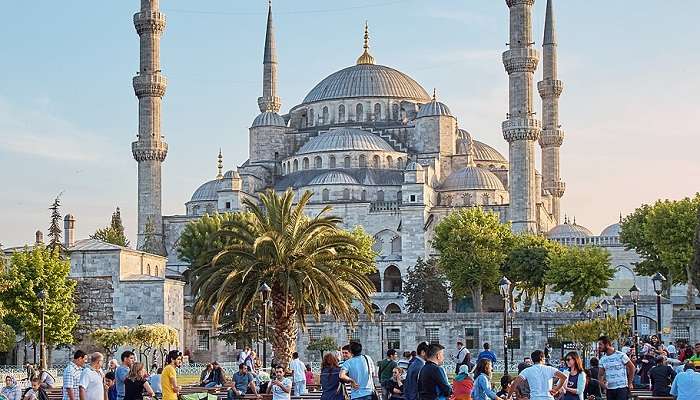
The Blue Mosque, officially known as the Sultan Ahmed Mosque, is a 17th-century Ottoman construction in the Turkish capital city of Istanbul. It was built during the rule of Ahmed I and was constructed between 1609 and 1617. The mosque’s construction is based on the classic Ottoman layout, a central dome surrounded by four semi-domes flanked by six minarets. Besides being a monument, the mosque is a regular prayer hall for Muslims, housing up to 10,000 for daily prayers. In 1985, the Blue Mosque was labelled a UNESCO World Heritage Site named ‘Historic Areas of Istanbul’.
The Rich History Of Blue Mosque
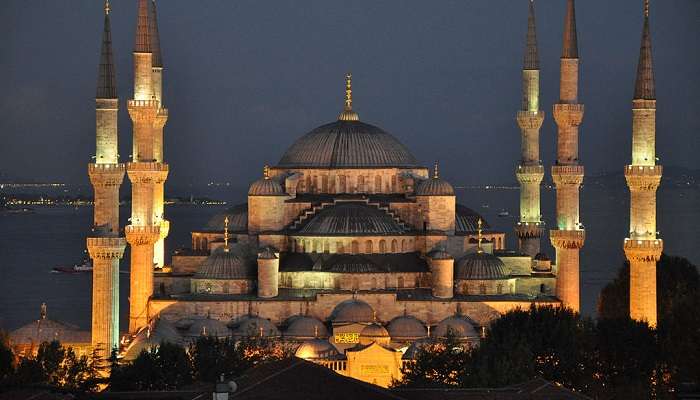
The Ottoman honour was heavily affected by the Peace of Zsitvatarok. The Blue Mosque was, therefore, built as an offering of God’s favours on the empire by Sultan Ahmad I. Before construction, the location chosen for construction was occupied by the palaces of Ottoman officials. This, in addition to the diversion of funds for the construction from the treasury due to Ahmed’s lack of major fiscal victories, were some of the reasons why the construction was frowned upon, and Islamic scholars prohibited Muslims from praying at the mosque. The construction ended in 1617, soon after which Ahmed I passed away. Eventually, the mosque’s grandeur and beauty overturned the initial hesitation shown by the public to embrace the construction of the Blue Mosque.
Must Read: Mount Nemrut
Marvel At The Intricate Architecture
The Sehzade Mosque heavily inspired Sedefkar Mehmed Agha’s construction. It was designed by his master, Mimar Sinan, in the early 16th century. The structure incorporated classical Ottoman style and aspects of Byzantine architecture, more commonly seen in the Hagia Sophia. Here is how its interior and exterior are structured.
1. Interior
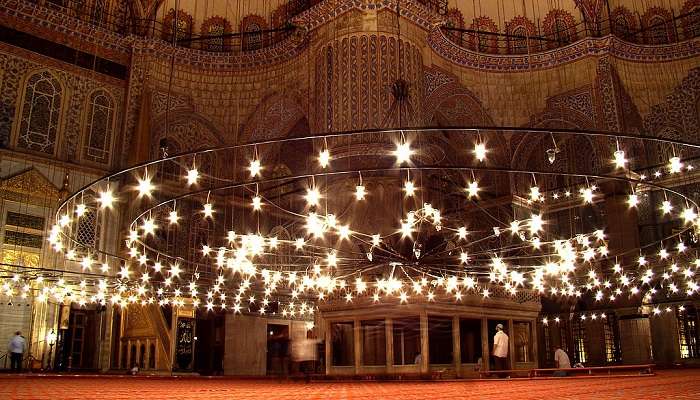
The interiors of the Blue Mosque are dominated by dome-like structures of varying sizes, supported by pillars. There is a two-floor carpeted gallery for daily prayers. There is an elevated platform for the sultan to pray, called the hunkar mahfil. Furthermore, the lower walls of the mosque are covered in Iznik tiles, named after its main production centre. The blue hue of the tiles gives the mosque its name. The lighting of the mosque is a combined effort of the mosque’s natural lighting and chandeliers.
2. Exterior
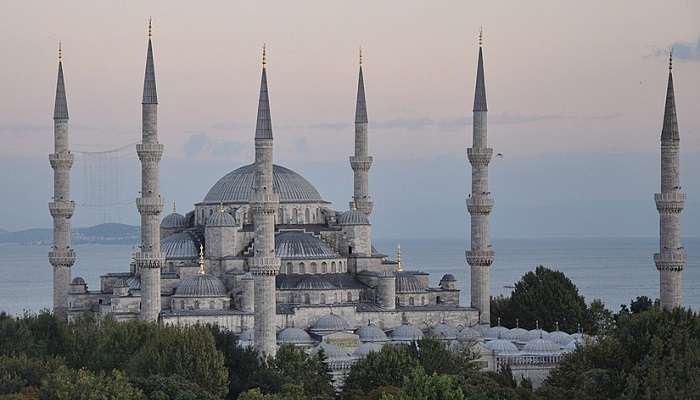
The exterior of the mosque is a beautiful combination of domes and semi-domes. The main courtyard has three entrances: a central and two other side entrances. The entrances are opened selectively for Muslims and non-Muslims, depending on the hours of prayer during the day. The Blue Mosque is one of Turkey’s only five mosques with six minarets. These minarets have two balconies, historically accessed by the muezzin, to announce the call to prayer.
The Cultural And Religious Significance
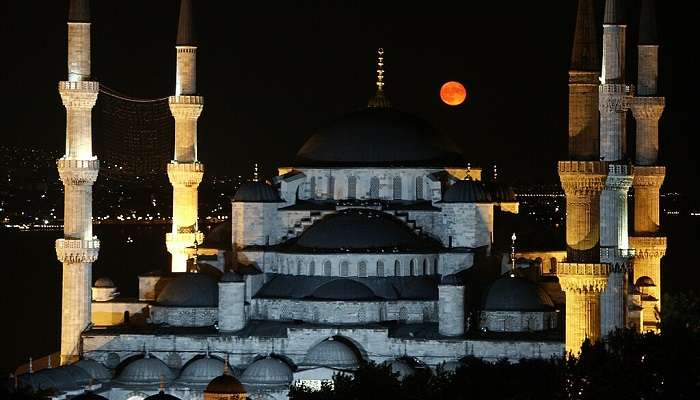
The Blue Mosque is an important religious site for Muslims. It is considered one of the most beautiful mosques in the world and an important part of Istanbul’s cultural heritage. Additionally, it is an architectural marvel and a special place in Turkish history and culture.
It has served as a place of worship for Muslims for over 400 years and remains a testament to the Ottoman Empire’s power and achievements. As mentioned earlier, it is still used as a place of daily worship by followers of Islam. To pray in a location as beautiful as the Blue Mosque is a dream for many Muslims globally. Furthermore, it is also a testament to the splendour of the Ottoman Empire as it speaks of the royalty and bravery it exuded in the day. The Blue Mosque is also a tourist attraction for the entire globe. People from all over the world visit Turkey every year and visit the mosque to soak in its splendour and witness the brilliance of its construction.
Suggested Read: Pamukkale In Summer
Restoration And Preservation Efforts For Blue Mosque
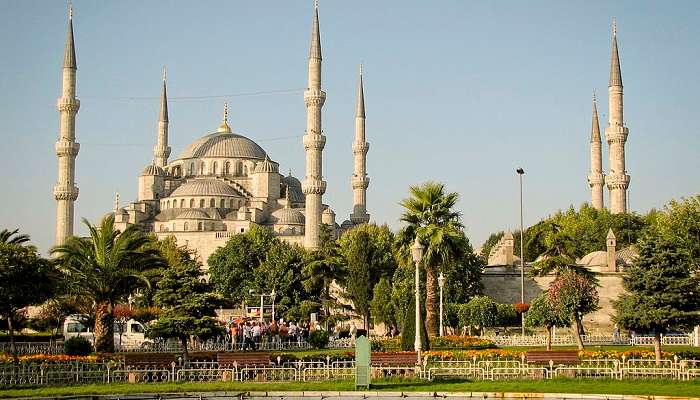
Over the years, the mosque has undergone numerous restoration and preservation projects to preserve its structural integrity and aesthetic appeal. In recent years, ongoing maintenance and preservation work has been carried out to protect the mosque from environmental damage and the wear and tear of daily use. Conservationists and experts regularly monitor the mosque’s condition and implement measures to prevent further deterioration. The mosque sustained considerable damage in 1894 due to a large earthquake, which prompted one of the largest restoration initiatives of the 20th century.
Recognising the Blue Mosque’s historical significance, the Turkish government launched an extensive restoration programme in the early 1900s to fix the damage and guarantee the building’s long-term preservation. The mosque’s intricate tile work was restored, its foundation strengthened, and its distinctive domes repaired. These were the main areas of attention for the restoration operations. Expert artisans were hired to repair the mosque’s exterior and interior ornamentation meticulously.
Location, Timings, And Entrance Fee
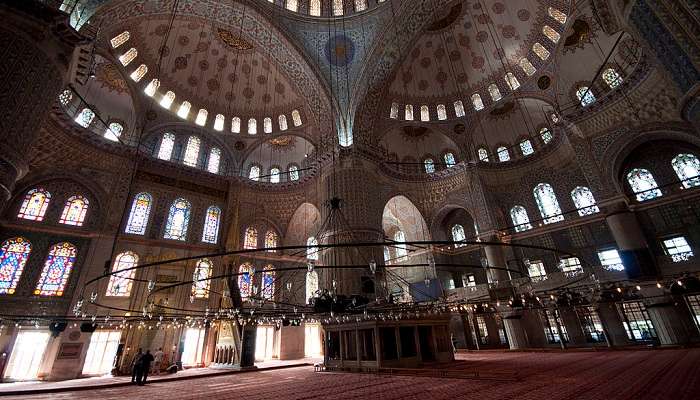
Locals consider the Blue Mosque’s location accessible and convenient. It is located on top of a hill in the heart of the Sultanahmet neighbourhood, next to the Hagia Sophia. Along with Hagia Sophia’s towers, the six Blue Mosque minarets define the skyline of historical Istanbul, next to the Bosphorus Strait. The T1 Line—Sultanahmet stop is the closest tram line, a quick walk from the Blue Mosque and Hagia Sophia.
Blue Mosque’s opening hours are 9 am to 6 pm, 7 days a week. Non-worshiping visitors may not enter the mosque during prayer sessions. These sessions take place five times per day. Each session lasts roughly 30 minutes. On Fridays, they close the mosque to tourists for about two hours at noon to accommodate the weekly sermon. This also applies to any holy days in the Islamic calendar. The Blue Mosque is closed during prayers; however, if you happen to be inside the Blue Mosque, you may be able to sit down and appreciate the Imam’s powerful chant.
Admission to the mosque is free. There is a donation box for the upkeep and preservation of the mosque at the exit door. If needed, you can ask a staff member to issue you an official receipt for your gift.
Further Read: Things To Do In Istanbul
Now that you have familiarised yourself with everything there is to know about the Blue Mosque, take this opportunity to book your tickets for a trip to Turkey. Take the leap of faith and experience the trip of a lifetime, whether solo or with your loved ones.
For our editorial codes of conduct and copyright disclaimer, please click here.
Cover Image Credit: Pedro Szekely for Wikimedia Commons
Frequently Asked Questions About Blue Mosque
Where is the Blue Mosque?
The Blue Mosque is located in Istanbul, Turkey. One should visit it for a wholesome experience.
Who built the Blue Mosque?
Sedefkar Mehmed Agha designed the Blue Mosque under the reign of Sultan Ahmed I.
Why is the Blue Mosque blue?
The Blue Mosque gets its name from the colour of the tiles used in its interior design.
Is there an entrance fee for the Blue Mosque?
No, the entry to the Blue Mosque is free of cost. However, checking the entrance fee before visiting is advisable to avoid hassle.
Can I wear jeans to the Blue Mosque?
Yes, as long as men and women keep their shoulders and knees covered on-premises.
People Also Read:
Mosques In TurkeyMosques In India

Embrace the essence of surreal places around the world through perfect narratives with a touch of imagination. As a content writer, I weave my ideas and words together to create a vivid picture of alluring destinations. Embark on limitless adventures as you read thrilling travel stories.











